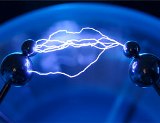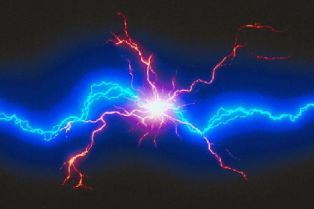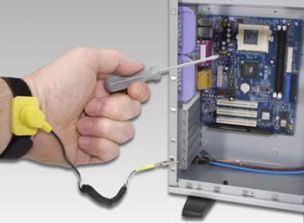Electrostatic protection
 A charge of static electricity arises on the surface of materials (especially dielectrics) as a result of contact of these materials through friction, separation or joining of surfaces, deformation, tearing, etc.
A charge of static electricity arises on the surface of materials (especially dielectrics) as a result of contact of these materials through friction, separation or joining of surfaces, deformation, tearing, etc.
The main reason for the appearance of a charge on the surface of materials with the indicated contact is the formation of the so-called Double layer ie. the formation of positive and negative charges located opposite each other on the contact surfaces in the form of oppositely charged layers. Simultaneously with the accumulation (generation) of static electricity, its dissipation (loss) always occurs.
The main factors that determine the quantitative side of static electricity build-up are:
-
area and distance between contacting (frictional) surfaces;
-
the nature of the interacting materials;
-
surface roughness, coefficient of friction, speed of mutual movement, pressure;
-
the influence of external factors (temperature, humidity, presence of an external electric field, etc.).
Dissipation (loss) of static electricity occurs due to the absorption (leakage) of charges from the environment, due to the conductivity of the material (bulk state and surface), radiation in the environment, emission of electrons, ion desorption, gas discharge, etc.

Protection against static electricity
Let's look at the main methods of protection against static electricity.
Removal (dissipation) of charges in the environment
This method can be implemented by grounding the source of charge generation. The discharge of static electricity charges can also be carried out through the processed substances, providing the necessary surface or volume conductivity of these substances.
An increase in surface conductivity can be achieved by forming or applying a conductive film (water, antistatic, etc.).
Volumetric conductivity of solids and liquids can be increased by adding special (antistatic) additives (additives) to them.
Reduced static electricity generation
Reducing the electrification of liquid dielectrics can be achieved by limiting the speed of their movement, since the magnitude of the current of electrification of liquid dielectrics is practically proportional to the square of the speed of their movement.
The electrification of liquid materials during pumping depends on the design factors (roughness of the inner surfaces of the pipes, their bend radii, gate designs, filters, etc.) that can be used as a means of reducing the electrification of liquids .The use of special relaxation (discharge) containers when filling and refueling also reduces their electrostatic charge.
Reduction (or elimination) of local overvoltages on structural elements due to the presence of an electrostatic field. The protruding (and conductive) parts make the structure of the electrostatic field very inhomogeneous and are a kind of "concentration" of the field. The strength of the field in the immediate vicinity of such concentrators can increase tens and hundreds of times.
Flattening the structure of the electrostatic field by removing or moving concentrators can be used as a means of reducing the likelihood of sparks in explosive areas.
Neutralization of static electricity charges
The method of neutralizing static electricity charges is based on compensating the generated charges with charges of the opposite sign, which are generated by a special compensating device. Devices and devices that apply the principles of neutralizing charges from static electricity, i.e. means for active electrostatic protection are being developed at home and abroad.

